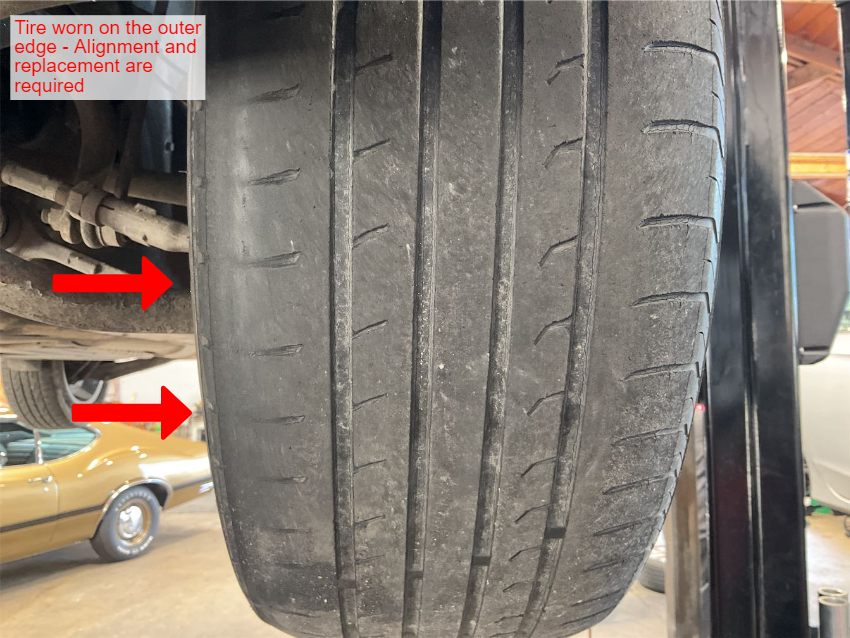Posted on 7/29/2024

If you own a Honda Odyssey and have noticed oil spots under your vehicle, you're not alone. Oil leaks are a common issue, especially as vehicles age. Let's dive into why your Honda Odyssey might be leaking oil and how Wayside Garage can help keep your vehicle in top shape. Common Causes of Oil Leaks One of the most common causes of oil leaks in a 2006 Honda Odyssey is a faulty oil filter housing seal. Over time, the rubber seals can dry out and crack due to exposure to engine heat and pressure, leading to leaks. The oil filter housing mounts to the engine block and houses the oil filter, making it a crucial component in maintaining proper oil pressure and cleanliness. Symptoms of a Faulty Oil Filter Housing Seal Oil spots: Noticing oil spots under your car is a clear sign of a leak. Oil residue: Finding oil around the engine block or oil filter housing indicates a possible seal failure. Oil level: A dropping oil level on the dipstick is a ... read more
Posted on 5/24/2024

Why would I need a Catalytic Converter? At Wayside Garage, we recently had a Toyota Tacoma come in with a check engine light on. Jonathan and I dove into the diagnostics to figure out what was going on. Here's a rundown of our process and findings, which might help you understand what goes into diagnosing and fixing such issues. Understanding the Problem The check engine light was triggered by a P0430 code, which points to a problem with the catalytic converter, specifically on bank two. This code indicates that the catalytic converter isn't operating efficiently. Diagnostic Process 1. Pulling Codes: We started by pulling the diagnostic trouble codes (DTC) using our scanner. 2. Driving and Monitoring: We then drove the vehicle with the scanner connected while monitoring the upstream and downstream oxygen sensors. These sensors help us understand how well the catalytic converter is performing. What We Found ... read more
Posted on 4/17/2024

Why are my tires wearing on the outside? When your tires show more wear on the outside, it usually indicates a few potential issues with your vehicle’s alignment, suspension, or driving habits. Let’s break down the common causes: 1. Improper Wheel Alignment: Wheel alignment is crucial for even tire wear. If your alignment is off, particularly if the wheels are angled outward at the front, it can cause the outer edges of your tires to wear down faster than the middle or inner parts. Getting regular alignments can help prevent this uneven wear. Understanding Wheel Alignment To fully grasp how alignment affects tire wear, it's important to understand the key components involved: Wheelbase The wheelbase refers to the distance between the front and rear axles, measured from the center of the hub. An unequal wheelbase on either side of your vehicle might indicate issues with suspension components, such as being worn, be ... read more
Posted on 4/1/2024

If your car has overheated, it's crucial to address the issue promptly to prevent further damage. Here's what you can do: 1. Pull Over Safely: As soon as you notice the temperature gauge rising or steam coming from under the hood, safely pull over to the side of the road or into a parking lot. Turn off the engine immediately to prevent further overheating. 2. Allow Engine to Cool: Do not attempt to open the hood right away, as it can be extremely hot and dangerous. Allow the engine to cool down for at least 30 minutes before attempting to open the hood. 3. Check Coolant Level: Once the engine has cooled, carefully open the hood and check the coolant reservoir. If it's low, add coolant to the appropriate level. Be cautious, as the radiator and coolant can still be hot. 4. Inspect for Leaks: Look for any signs of coolant leaks under the car or around the engine. Leaks can indicate a damaged hose, radi ... read more
Posted on 4/1/2024
What does my car need for spring break from Wayside Garage As the flowers bloom and the weather warms up, it's time to give your car some extra love and care. Here are some simple tips to keep your vehicle running smoothly this spring: - Check Your Tires: Make sure your tires are properly inflated and have good tread depth. You can use a tire gauge to check the pressure and a penny to check the tread depth. - Inspect Your Wipers: Winter weather can be tough on windshield wipers. Check for any signs of wear or damage, and replace them if necessary. Don't forget to top up your windshield washer fluid, too! - Change Your Oil: Remember, engine oil should be replaced every 6 months or 5,000 miles, whichever comes first. Schedule an oil change if you're due for one. - Test Your Battery: Cold weather can take a toll on your car battery. Test it to make sure it's still holding a charge, and replace it if it's weak or old. - Clean Your Car: Even though we d ... read more